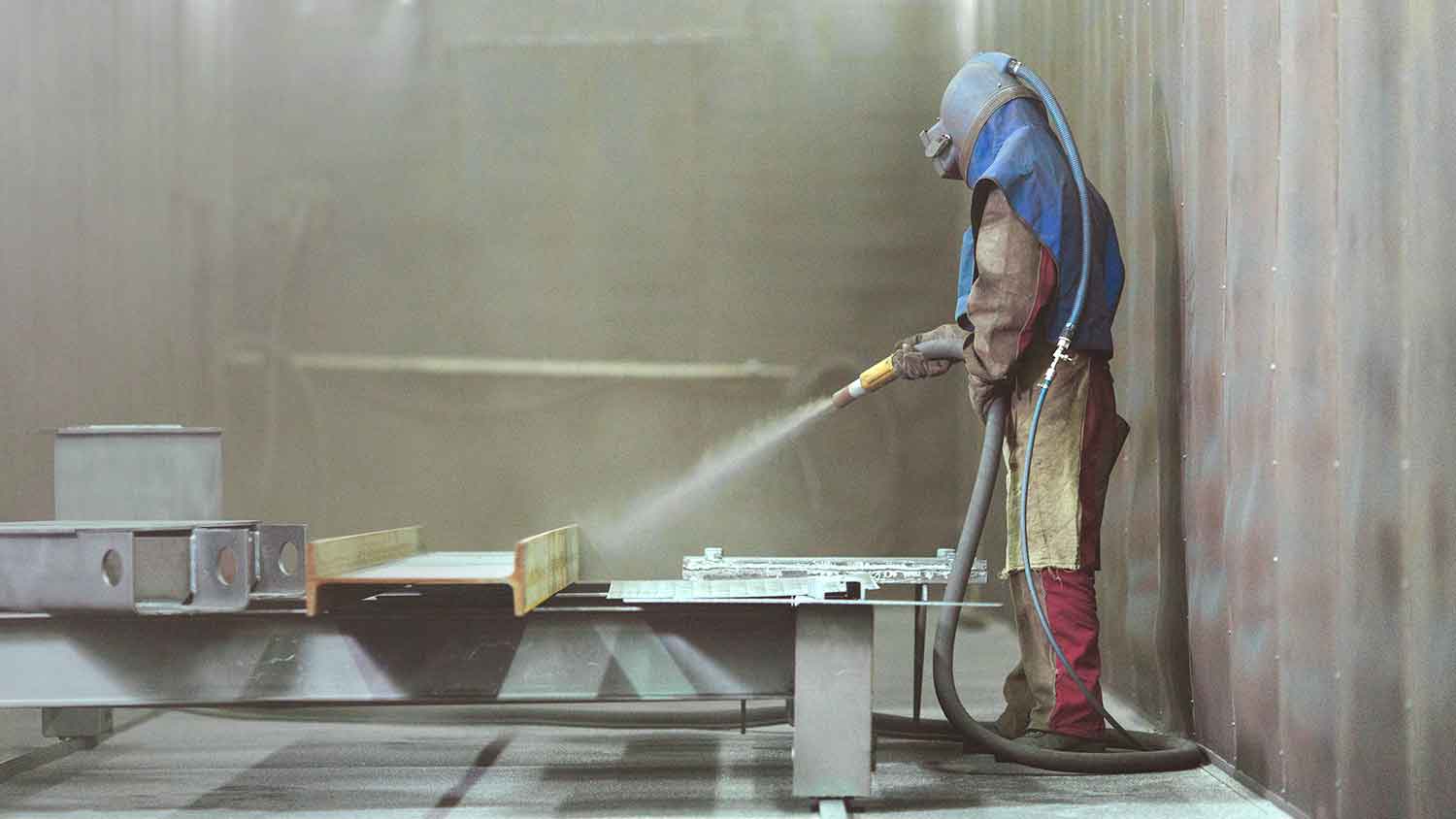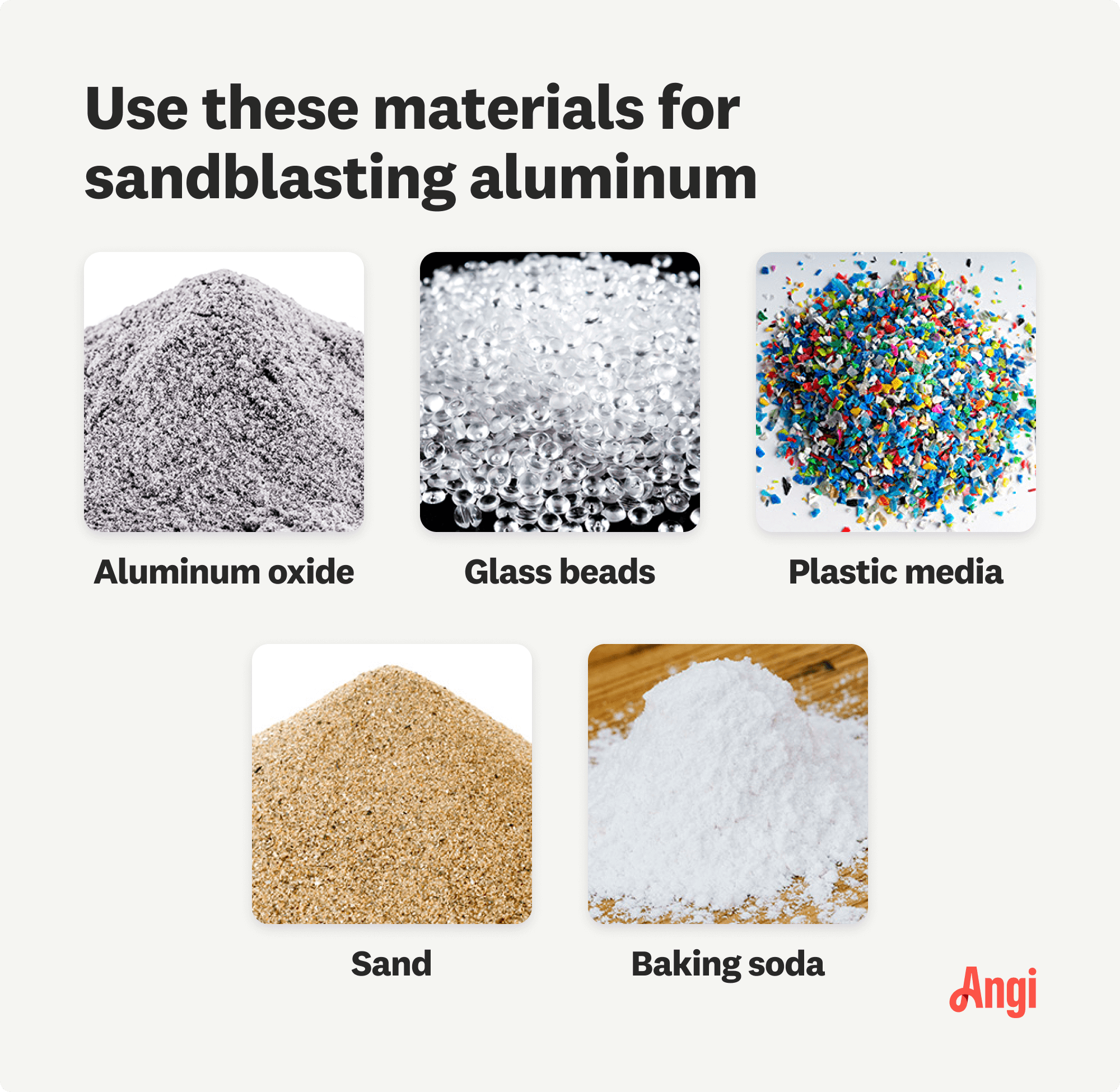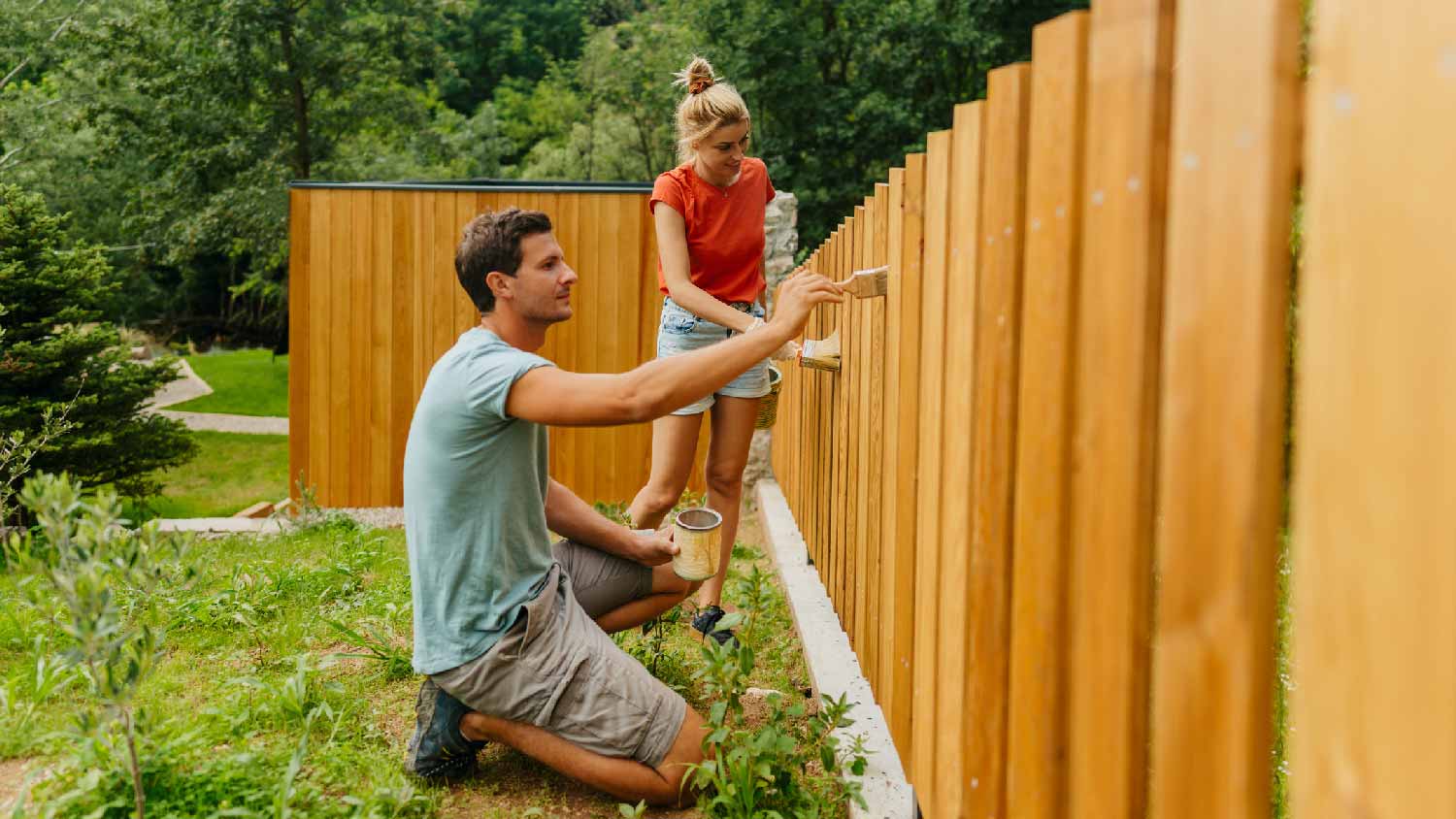
Painting your house increases curb appeal and durability, but you may need to rent a lift for the project. Here’s a breakdown of cost by lift type and height.
Give your aluminum surface a second chance with some grit


Sandblasting removes unwanted substances from surfaces effectively.
You can sandblast aluminum using materials that are less rigid than the metal.
You should leave sandblasting to the pros, especially large sanding projects like your home’s aluminum siding.
Proper safety precautions are a must to protect your respiratory health if you DIY.
Aluminum is the unsung hero of metals in many applications. Its lightweight, rust-defying, and long-lasting qualities make it a go-to material for many projects. When refreshing an old aluminum surface, many might wonder if you can sandblast aluminum without ruining the material. Well, hang tight—here we explore the ins and outs of sandblasting aluminum.
Sandblasting, or abrasive blasting, cleans, strips, or prepares a surface for painting or other types of finishing by propelling abrasive materials at high speeds. These abrasive materials include sand, silica, glass beads, aluminum oxide, and more. The abrasive particles quickly remove contaminants, rust, old paint, and other unwanted substances from the surface.
Yes, you can sandblast aluminum, but you must consider a few things first. Aluminum is a relatively soft metal compared to steel, nickel, and iron. So, choosing the suitable abrasive media and pressure settings is essential. For instance, you can't use sandblasting materials that are more rigid than aluminum. Using abrasive media that is too coarse or blasting at excessively high pressures can also damage the aluminum surface. Spot testing is always a good idea to ensure a good outcome.

Sandblasting isn’t an ideal DIY project. We advise homeowners to hire a local sandblasting pro—they’ll do a better job, and you won’t put yourself or your costly aluminum siding in danger during the process. If you have previous sandblasting experience and choose to go ahead with a DIY, keep the following factors in mind for your aluminum sandblasting project.
This includes a sandblasting cabinet or booth, tarps, sandblasting gun, air compressor, and abrasive media. Blasting should be confined within a space to avoid contributing to air pollution. Unconfined blasting done outdoors releases particulate emissions. Whether working inside or outside, a vacuum recovery system will minimize what gets in the air. The cost to rent sandblasting equipment varies based on your location. Most homeowners will find equipment selections at big-box home improvement stores like Home Depot or Lowe’s.
Your health and safety should be a top priority. You must wear protective gear, including a full-face respirator, safety goggles, gloves, and a full-body suit. Sandblasting produces fine particles and can be hazardous if not adequately protected. Ensure adequate ventilation in your workspace to remove dust and fumes from sandblasting.
Remember, inhaling sandblasting materials, often containing harmful substances like silica, poses serious health risks. Silica dust can lead to a lung disease called silicosis, damaging the respiratory system. Prolonged exposure may even cause lung cancer and other respiratory problems.

Standard abrasive media for sandblasting aluminum include aluminum oxide, glass beads, plastic media, sand, and baking soda. These materials are less aggressive and won't permeate the surface.
Start with lower pressure settings and gradually increase if necessary. Pressure between 40 to 80 psi (pounds per square inch) is often suitable for aluminum. Always refer to the manufacturer's recommendations for your specific abrasive media.
While sandblasting can be a valuable method for cleaning up aluminum surfaces, it may not be suitable in some situations.
Thin or fragile aluminum: These surfaces may not withstand the abrasive force of sandblasting—consider alternative methods like power washing, chemical stripping, or hand sanding.
Highly decorative aluminum surfaces: They may sometimes lose their details if sandblasted, so explore gentler cleaning methods, as mentioned above.
Aluminum alloys: Some may react unfavorably with certain abrasive media, leading to corrosion or other issues, so consider working with a local sandblasting professional.
For homeowners, sandblasting aluminum can be a great project that adds to the value of your abode. But it also has pros and cons. Let's take a look at both.
Adequate surface prep: Sandblasting removes rust, paint, and other contaminants from aluminum surfaces, leaving them clean and ready for finishing or painting.
Restoration: It's an excellent way to restore old aluminum items, such as patio furniture or metal fixtures, to their original condition.
Speed: It can be faster than manual sanding or chemical stripping, saving time on home improvement projects.
Longevity: Sandblasted surfaces often provide better adhesion for paint or coatings, leading to a longer-lasting finish.
Cost: Sandblasting equipment and materials can be expensive to purchase or rent, making it less cost-effective for small, one-time projects.
Safety concerns: Sandblasting requires proper safety gear and precautions, including protective clothing, respirators, and goggles, which can be cumbersome and costly.
Skill and experience: Effective sandblasting requires skill and experience to avoid damaging the aluminum surface or creating uneven patterns.
Messy process: Sandblasting generates a significant amount of dust and debris, which can be messy and require thorough cleanup.
Environmental considerations: Sandblasting can contribute to environmental concerns due to the disposal of abrasive media and potential contamination if you plan to remove toxic coatings.
Noise: The equipment used in sandblasting can be noisy, which may be a concern in residential areas and sensitive ears.
Significant projects: Sanding blasting your home's aluminum siding is best suited for a licensed professional, costing around $1,000 on average or $1 to $5 per square foot.
From average costs to expert advice, get all the answers you need to get your job done.

Painting your house increases curb appeal and durability, but you may need to rent a lift for the project. Here’s a breakdown of cost by lift type and height.

The cost to sandblast your home’s exterior or another surface on your property depends on the method and the materials you use. Learn more with this guide.

The cost to stain a deck varies depending on its size, location, and type of stain. Keep reading to learn more about how much you might spend.

Staining a fence is a great project if you’re a handy DIYer. Learn how much it costs to stain a fence and how you can influence the price.

Finding out which paint shades do and don’t pair well with gray will help you choose the right front door color for a gray house, no matter your setup.

Are you ready to refinish your siding and revitalize your curb appeal? Before getting started, discuss these exterior painting questions with your pro.